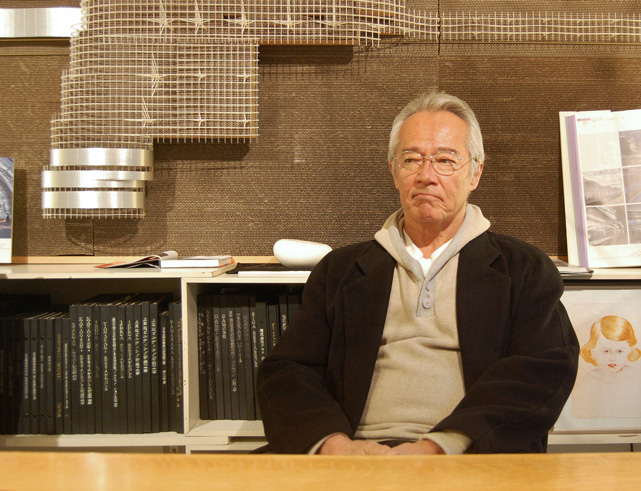of Edward Suzuki Associates (www.edward.net)
Degrees from Notre-Dame and Harvard Universities gave Edward Suzuki the preparation he needed to work under some of the world’s top architects. But it wasn’t until he started his own firm that he truly began to shine, winning numerous design awards and even being invited to serve as a guest critic at his alma mater, Harvard. One of Japan’s most prominent designers for over two decades, Edward Suzuki’s creations can be seen across the country and around the world.
What is your background and why did you decide to start your business?
After receiving my master’s degree in the US in 1975, I worked for Kenzo Tange. This was a very busy but very fun experience; basically I just designed all the time. Tange didn’t care who you were as long as you designed. Every time a new project came along there would be an intramural competition in the office. A couple of my designs were liked and developed to a certain level, but it was so hectic, and at least a couple of times a month we would pull all-nighters. One morning I went home to get some sleep, and as I was washing my face, I looked into the mirror and saw how miserable I looked. After two months I decided to hand in my letter of resignation. I was 28 years old and it was a pretty big step.
Another reason I decided to move on was that at Kenzo Tange job there was little chance to learn about construction documents and all the things an architect needs to be trained in to start his own firm. After resigning I moonlighted by designing for a friend, and that was really the birth of my practice. Although it didn’t actually last, it got me started. I established my own firm in December 1977.
“Design is poetry, so I try to come up with the most by starting with the least”.
What are the main differences that set your firm apart from others?
If I were to compare myself now with when I started out, I would say the biggest difference is that I used to spend a lot of time and energy concentrating on the exterior image of a building, whereas now I am a lot more interested in the space inside. Focusing on what cannot be seen, or the invisible ambiance, is one thing we are doing at this time that might set us apart from other practices that might be concentrating more on the image of the architecture.
What is your design philosophy?
A certain scholar by the name of Buckminster Fuller, inventor of the geodesic dome, once said something like, “If poetry is saying the most with the least amount of words then Einstein must have been the greatest poet in history.” Why? Because he summed up the whole universe in the simple equation E=MC2. My philosophy is basically the same: design is poetry, so I try to come up with the most by starting with the least.
What is your personal favorite project around Tokyo and why?
They are all my babies, but to name a couple I would mention our smallest work, a koban (police station) in Shibuya, which has also received the most publicity, and Saitama Shintoshin station. The reason I mention them is that they are unique in their functions. The koban is designed as a face; it can be seen as a warship, an eagle, an elephant…it depends on the interpretation of the viewer. There is a certain rapport that can be born between people and architecture. The station is our largest project so far. It is very unique in that one-third of the roof is top lit, making it very bright. It is a shelter that is not enclosed on the sides, so there is a natural flow of air, and lots of green bamboo planted on an east-west axis on the pedestrian deck.
Where would you recommend visitors to Tokyo go in order to see great architecture?
My favorite street is Omotesando because of its foliage and the fact that it is a very beautiful, interesting, and exciting shopping street. It is like an open air architectural museum, with many big names from Japan and abroad. It’s just an easy stroll from Meiji Jingu, and you can spend the whole day there.
What kind of advice would you give to aspiring architects or entrepreneurs?
Looking back I think it’s very important not to be dragged down by journalism or mass media. Don’t just follow the fashions, have beliefs of your own and stick to your beliefs; then you can be unique.
What is your dream project in the future?
I haven’t attempted a museum or hotel. I would also like to leave an invisible kind of architecture, something like music that is in a way eternal. I would like to create some kind of architecture that can last through the ages.









